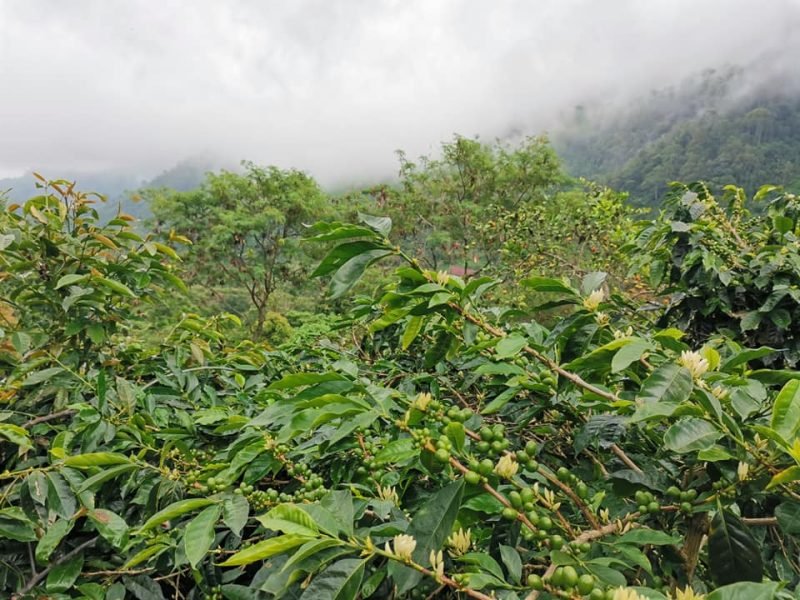What Makes Grown Coffee in Indonesia So Unique?
Picture this: you’re sipping a rich, full-bodied brew—earthy, bold, and unforgettable. That flavor likely comes from Grown Coffee Indonesia, cultivated in volcanic soil and nurtured through generations of craftsmanship. More than just a drink, it’s a sensory experience rooted in culture, nature, and history. In this guide, you’ll discover why coffee grown in Indonesia stands apart—and how each cup tells a story of land, labor, and legacy.
The Rich Geography Behind Grown Coffee in Indonesia
Indonesia’s natural environment plays a major role in shaping the coffee it produces. With over 17,000 islands stretching along the equator, the country offers an ideal combination of high altitudes, rich volcanic soil, and consistent rainfall.
The result? A complex and flavorful coffee profile that varies from island to island.
Key growing regions include:
- Sumatra: Produces coffee with low acidity, earthy tones, and full-bodied richness. Learn more about Sumatra’s unique taste and brewing methods
- Java: Known for smooth, clean cups with herbal undertones.
- Bali: Offers bright, floral notes with hints of citrus.
- Sulawesi (Toraja): Celebrated for complex, spicy profiles and balanced structure. Discover more in the Toraja coffee guide
- Aceh Gayo: A top-tier Arabica region with high altitude and sustainability practices. Here’s how to choose the best Aceh Gayo green beans
Arabica and Robusta: The Twin Pillars of Indonesian Coffee
Understanding the two main types of coffee grown in Indonesia helps reveal the country’s diverse flavor landscape.
Arabica:
- Grown at higher elevations
- Offers a smoother, more complex cup
- Ideal for pour-over and specialty methods
Robusta:
- Thrives at lower altitudes
- Higher in caffeine, more bitter and bold
- Often used in espresso blends and traditional coffee styles
This balance gives Indonesian coffee its adaptability and widespread appeal.
How Altitude and Climate Shape Flavor in Grown Coffee Indonesia
Coffee grown in higher altitudes typically produces more acidity and clarity, while lower altitudes deliver heavier, earthier flavors. The microclimates across Indonesia—from misty highlands to humid valleys—contribute to the distinct profiles of each region.
The interplay between temperature, humidity, and rainfall allows Indonesian coffee to develop its signature notes of spice, chocolate, tobacco, and tropical fruit.
Traditional Farming Meets Modern Sustainability
Behind every bag of grown coffee Indonesia is a farmer—often a smallholder—who treats coffee as both livelihood and legacy. Many farmers still rely on traditional techniques, such as:
- Hand-picking ripe cherries
- Shade-grown cultivation under native trees
- Natural composting from surrounding plants
At the same time, there’s a growing shift toward sustainable coffee production, with a focus on environmental preservation and ethical sourcing. Read more about Indonesia’s path to sustainable coffee farming
Coffee Processing Methods: Crafting Flavor from the Cherry
Coffee in Indonesia is processed using several techniques, each influencing the final cup.
Wet-hulling (Giling Basah) – Unique to Indonesia, especially Sumatra. It creates a full body and muted acidity.
Dry (natural) processing – Enhances fruity notes and body.
Washed processing – Brings out clarity and brightness, more common in Java and Bali.
Each method has its purpose, and the choice often depends on regional climate and tradition. Learn more about specialty coffee processing techniques
How Indonesians Enjoy Their Grown Coffee
Coffee in Indonesia isn’t just consumed—it’s celebrated. Across the country, locals brew and serve coffee in ways that reflect regional identity.
- Kopi Tubruk: A strong, unfiltered brew made by boiling coffee grounds with sugar.
- Pour-over: Increasingly popular among younger generations and specialty cafes. Here’s a guide on mastering pour-over timing
- Espresso and milk-based drinks: Common in modern urban cafes blending tradition and innovation.
Indonesian coffee is also paired with local delicacies like klepon (sweet rice balls) and ketan durian (sticky rice with durian) for a uniquely immersive experience.
Preserving Quality: How to Store Grown Coffee Beans
Great coffee starts on the farm, but it can end in disappointment if not stored properly. To preserve the freshness and aroma of your Indonesian coffee:
- Store beans in an airtight, opaque canister
- Keep them away from heat, light, and moisture
- Avoid refrigeration unless vacuum-sealed
Here’s a complete guide on how to store your coffee beans correctly
Why Grown Coffee Indonesia Deserves a Spot in Your Daily Ritual
Every cup of Indonesian-grown coffee tells a story—of ancient forests, mountain winds, early morning harvests, and the quiet pride of those who grow it. Whether you’re brewing a single-origin Gayo for clarity or a bold Toraja for body, you’re not just drinking coffee. You’re tasting the land, the people, and the heritage.
Looking to explore more varieties? Check out Indonesia’s best specialty coffees or learn how to find the best green coffee bean distributors
Final Takeaway
Grown Coffee Indonesia isn’t just a product—it’s an experience waiting to be explored. From farm to filter, every step in its journey adds depth, meaning, and flavor. So next time you take a sip, ask yourself:
What story is your coffee telling you?
If you’re ready to uncover more, start with our curated guide to Sumatra’s distinct coffee characteristics or join the third wave of coffee culture

